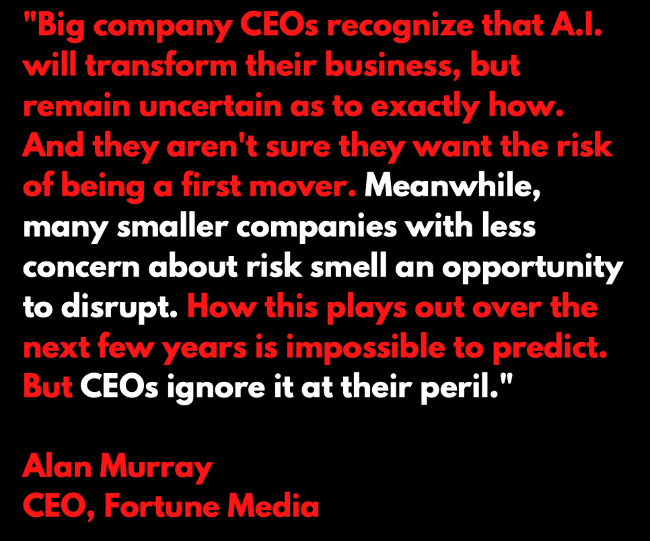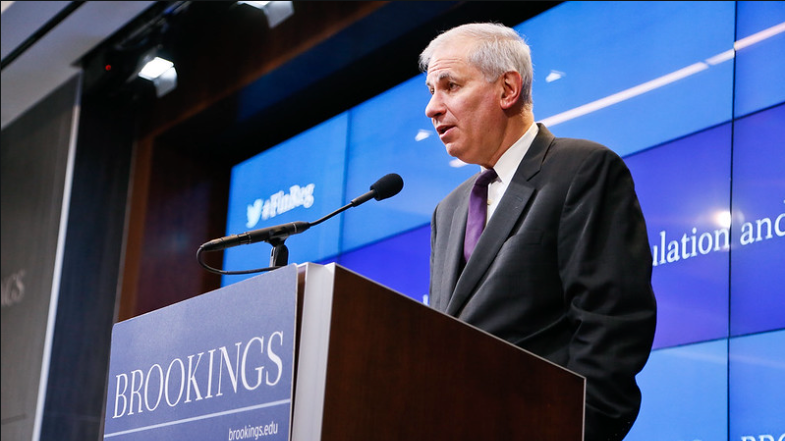With Labor Day weekend upon us, we bid adieu (for the Wordle fans out there) to Summer and welcome Autumn. This week, we have the FDIC’s proposed rules on new requirements for long-term debt for larger banks. We also see the timid and slow approach big banks are taking with generative AI. Finally, we look at the trends that will separate the winners from losers in community banking in the next decade.
1. FDIC calls for more debt at regionals
Banking Dive broke down the FDIC proposal for banks to hold more debt to shield against failures.
Under the proposal, which the five-member Federal Deposit Insurance Corp. board passed unanimously on Tuesday, large banks would be required to maintain a minimum amount of eligible long-term debt equal to 3.5% of average total assets or 6% of risk weighted assets, whichever is higher.
Banks would have three years from the new rule’s adoption to meet the new standard, the FDIC said.
Large banks have recently maintained roughly 75% of the required amount of long-term debt outlined in the proposal, according to the FDIC’s estimates.
This follows Chairman Martin Gruenberg’s speech and Q&A on the topic at the Brooking Institution two weeks ago. In his comments, he rationalized the proposed regulation as a stabilizing efforts, to avoid future failures vs. speeding resolutions.
Something missed in a lot of headlines of late, particularly from Treasury Secretary Yellen, were earlier remarks from Fed Governor Michelle Bowman back in April on the consequences of fewer banks in the U.S. banking system
The growth of lending in the shadow banking system can have significant consequences for the availability of credit over economic cycles, with losses eventually being transferred to regulated depository institutions, as appears to have occurred after the 2008 financial crisis.
Right-sizing regulatory requirements, improving transparency, and supporting regulatory approaches that support new banks are important tools to promote healthy competition and reduce unintended consequences. We need a viable pipeline for the creation of new banks in the United States, and there are troubling indications that we are falling short on this front, with a continued decline in the number of banks in the United States, the continued interest in charter strip applications, and the ongoing shift of traditional bank activities into shadow banks.
2. JPMorgan bearish on ChatGPT
The Times has a story on the reluctance of large companies like JPMorgan to adopt new AI technologies.
Lori Beer, the global chief information officer of JPMorgan Chase, talks about the latest artificial intelligence with the enthusiasm of a convert. She refers to A.I. chatbots like ChatGPT, with its ability to produce everything from poetry to computer programs, as “transformative” and a “paradigm shift.”
But it’s not coming soon to the nation’s largest bank. JPMorgan has blocked access to ChatGPT from its computers and told its 300,000 workers not to put any bank information into the chatbot or other generative A.I. tools.
Widespread use of it at many companies could be years away.
This sentiment echoes warnings from Fortune Media leader Alan Murray.

The concern is not unreasonable. Compliance is essential, but not as an excuse that costs your relevance as an organization.
Indeed, you are not a technology company. Your focus should not be on creating new technologies.
But you should be great at using it.
As a smaller FI, one of your inherent strengths is being more nimble and responsive to your customers. Tools like generative AI can amplify those attributes and help you stand out more in the market.
The present environment is ready-made to run ahead and take advantage, while large competitors are happy to rest on their stale approaches and customer experience.
3. Getting back to the banking crisis of the 20’s
And speaking of opportunities, Ron Shelvin of Cornerstone Advisors writes on the major hurdles banks face in the coming years. In addition to the market-wide challenges of rising borrowing costs and unrealized losses in bond and CRE portfolios, Ron looks at the fundamental ways banks are challenged to stay relevant.
Finding these people—and others who bring expertise in technologies like machine learning, conversational AI and generative AI—will be the number one challenge for banks throughout the rest of the decade.
Banks need to stop playing innovation charades. With the influx of new technologies, the challenge isn’t “innovation” but “creativity”—how can banks, at an organizational level, make more creative use of data and technology than their competitors, and how can they help their people become more creative in getting their jobs done.
And so closes the week and officially Summer. Bank failure is a tricky thing, and the FDIC sometimes plays “no-backsies” with seized assets. Let us know how we did below:

